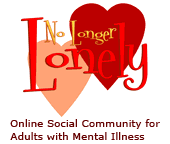| «« |
January 2007
|
»» | ||||
| S | M |
T
|
W | T | F | S |
| 1 |
2
|
3
|
4
|
5
|
6
|
|
|
7
|
8
|
9
|
10 |
11
|
12
|
13
|
| 14 |
15
|
16 |
17
|
18
|
19
|
20
|
|
21
|
22 |
23
|
24
|
25
|
26
|
27
|
| 28 | 29 | 30 | 31 | |||
- NIMH sponsored postpartum depression site
- Acupressure points for relieving anxiety and nervousness
- The limits of rational thought
- Full LinkBlog
| Name |
(Note: anti spam delay set)
Anxiety Insights is not responsible or liable for any diagnosis made by a reader based on the content of this website.
Anxiety Insights is not liable for the contents of any external internet sites listed, nor does it endorse any commercial product or service mentioned or advised on any of the sites.
Always consult your doctor if you are in any way concerned about your health.
Anxiety 2 Calm
Anxious Living : An Exploration
into Social Anxiety
Dare to Dream
Dear Tobacco
Dr. Deborah Serani's:
Psychological Perspectives
Finding the Confidence
GNIF Brain Blogger
Mental Health Minutes
PTSD Combat
The Happiness Guy
The Trouble With Spikol
WebMD: Anxiety and
Stress Management

Independant Lives
Agoraphobia and Panic
Disorder Foundation
Anxiety Disorders Association
of America
Anxiety Network Australia
Anxiety-Panic.Com
AnxietyZone
BrainPhysics - OCD
Canadian Network for Mood
and Anxiety Treatments
David Baldwin's
Trauma Information Pages
EMDR Institute, Inc.
EMDR Network Japan
Fear of Flying course (free)
Healthy Minds
Internet Guide to REBT, CBT
Living with a Brain Disorder
Morita Therapy
Mayo Clinic : Depression
Mayo Clinic : GAD
Mayo Clinic : OCD
Mayo Clinic : Panic Attacks
Mayo Clinic : PTSD
Mayo Clinic : Social Anxiety
Medicines.org.uk - Anxiety &
Depression guides
Mind-Your-Mind Canada
National Center for PTSD
National Institute of Mental
Health (NIMH)
No Such Thing As Crazy
OCD Action, UK
OCD Ireland
Obsessive Compulsive Foundation
Open Minds, Open Doors
Paniccure.com
Partners With PTSD
Rational Emotive Behavior
Therapy (REBT)
Sane Australia
Shyness & Social Anxiety
Service of Australia
Social Phobia/Social Anxiety
Association
Social Anxiety Support board
South African Depression &
Anxiety Group
tAPir - the Anxiety Panic
internet resource
The Panic Center
(Free CBT based programs)


Torture experts write APA policy
[APA] still rocked by torture debate
Petition for psychologists
AMA president says APA "did not accurately represent our ethical guidelines"
Psychologists Aiding Torturers
Annual conference endorses
APA's torture policy :(
Deputy Army Chief of Staff for Intelligence, Lt. General John (Jeff) Kimmons, has stated that no actionable intelligence had been obtained through abusive interrogation methods in the last 5 years.
Physicians for Human Rights call on Congress to vote No on Military Commissions Bill
Torture is a Form of Trauma;
Trauma Causes PTSD
Psychoanalysts' association condemns torture use

monument, Monmouth County
New Jersey.

Yul Brynner
Menthol cigarettes harder to quit
Secondhand smoke in cars serious threat to kid's health
Starting smoking young increases addiction risk
Smoking doesn't slim girls;
stunts boys' growth
40 reasons why you should quit smoking
Pregnant smokers 'prime' their kids to smoke
Smoking related coronary artery disease quickly reversed if young smokers quit
Not ready to quit? Try cutting back
Half smoking again within year of lung cancer surgery
Cutting back 'compensation' increases toxin load per cigarette
Tobacco companies upped nicotine level 11% since 1998
Last Reset: 04:05, 14 May 06
![]()
A nationwide epidemiologic study indicates that a lower suicide rate among children 5-14 years old is associated with a higher number of prescriptions for selective serotonin reuptake inhibitor (SSRI) antidepressants. For each U.S. county, Gibbons et al. determined the number of suicides and the number of SSRI prescriptions for residents ages 5-14 during 1996-1998. The association with SSRIs remained after allowance for income and availability of psychiatrists, suggesting that lower suicide rates were not due to better access to health care. This finding appears to differ from the results of randomized, controlled drug trials for children.
© 2006 American Psychiatric Association
Am J Psychiatry. 2006 Nov; 163:1898-1904
The Relationship Between Antidepressant Prescription Rates and Rate of Early Adolescent Suicide
Gibbons RD, Kwan Hur K, Bhaumik DK, Mann JJ.
OBJECTIVE: In 2002, 264 children and adolescents ages 5-14 died by suicide in the United States, the fifth leading cause of death. Of these suicides, 260 were in the 10-14 year age group, making suicide the third largest cause of death behind accidents and malignancy.
Although 60% of suicides in the general population occur in the midst of a mood disorder, usually untreated, little is known about the relationship between treatment of mood disorders and youth suicide.
The FDA recently linked adverse event reports of suicidal ideation among children and adolescents in randomized controlled trials to selective serotonin reuptake inhibitors (SSRIs) and consequently required a change in labeling that included a black box warning regarding SSRI use for all age groups.
Given that the age-adjusted suicide rate is about six times higher in 15-19 year olds compared with 10-14 year olds, the risk-benefit ratio may be different in younger children. Therefore, this study examined the association between antidepressant medication prescription rate and suicide rate in children ages 5-14 prior to the FDA findings by analyzing associations at the county level across the United States.
METHOD: National county-level suicide rate data among children ages 5-14 were broken down by sex, income, and race during the period 1996-1998. National county-level antidepressant prescription rate data were expressed as number of pills prescribed per person. The primary outcome measure was the suicide rate in each county expressed as number of suicides for a given population size.
RESULTS: After adjustment for sex, race, income, access to mental health care, and county-to-county variability in suicide rates, higher SSRI prescription rates were associated with lower suicide rates in children and adolescents.
CONCLUSIONS: The aggregate nature of these observational data precludes a direct causal interpretation of the results. More SSRI prescriptions are associated with lower suicide rates in children and may reflect antidepressant efficacy, treatment compliance, better quality mental health care, and low toxicity in the event of a suicide attempt by overdose.
(Text has been reformatted for clarity; ed.)








